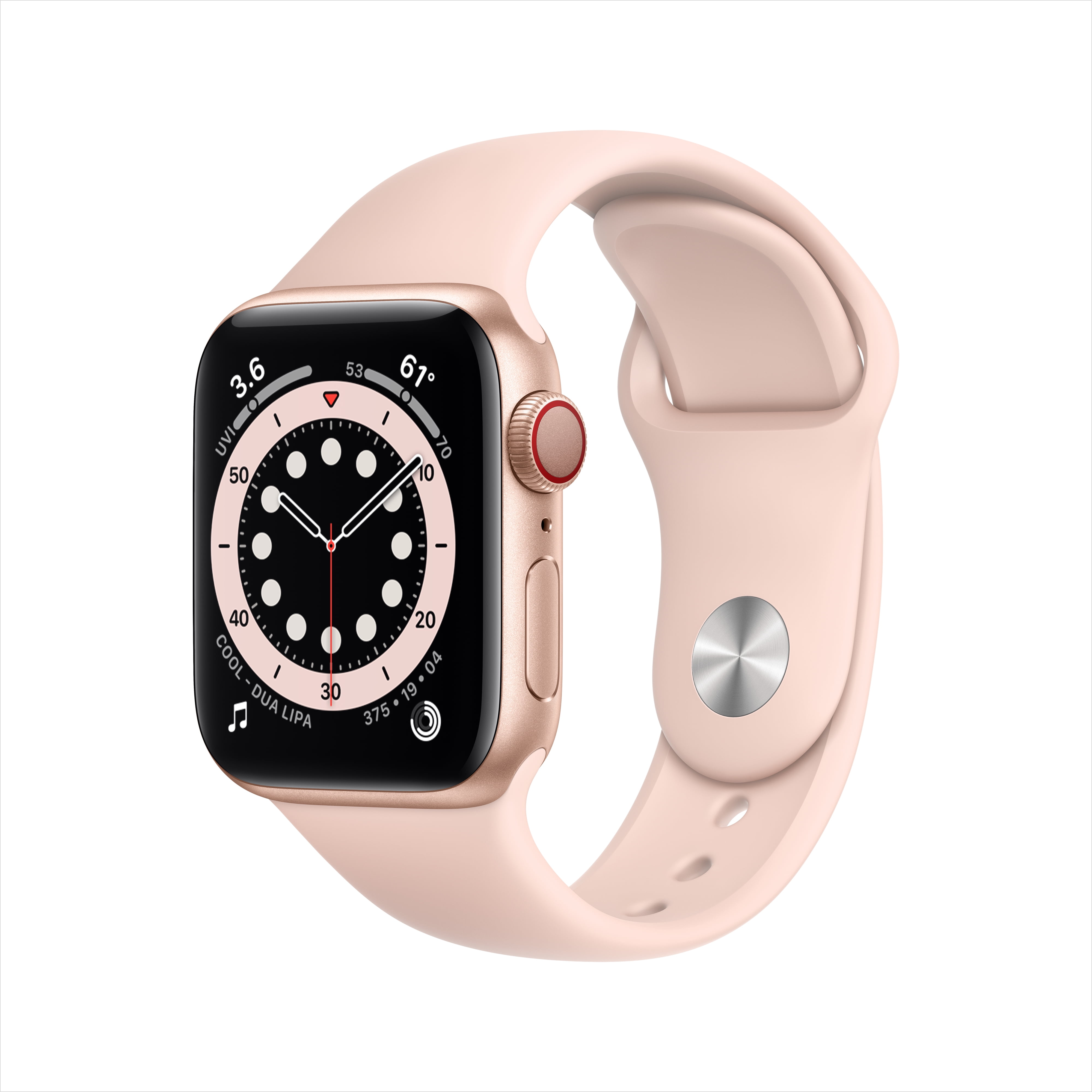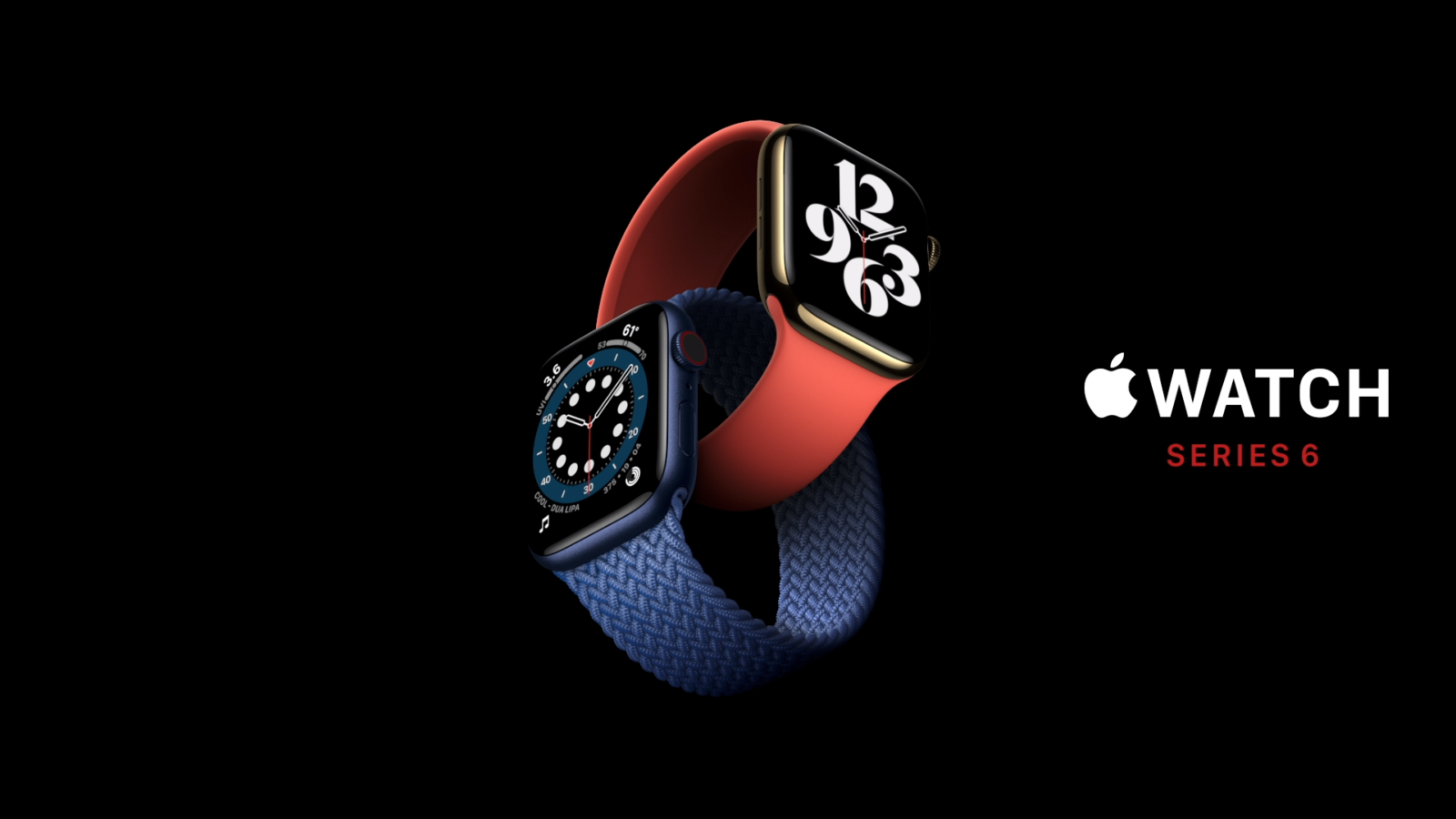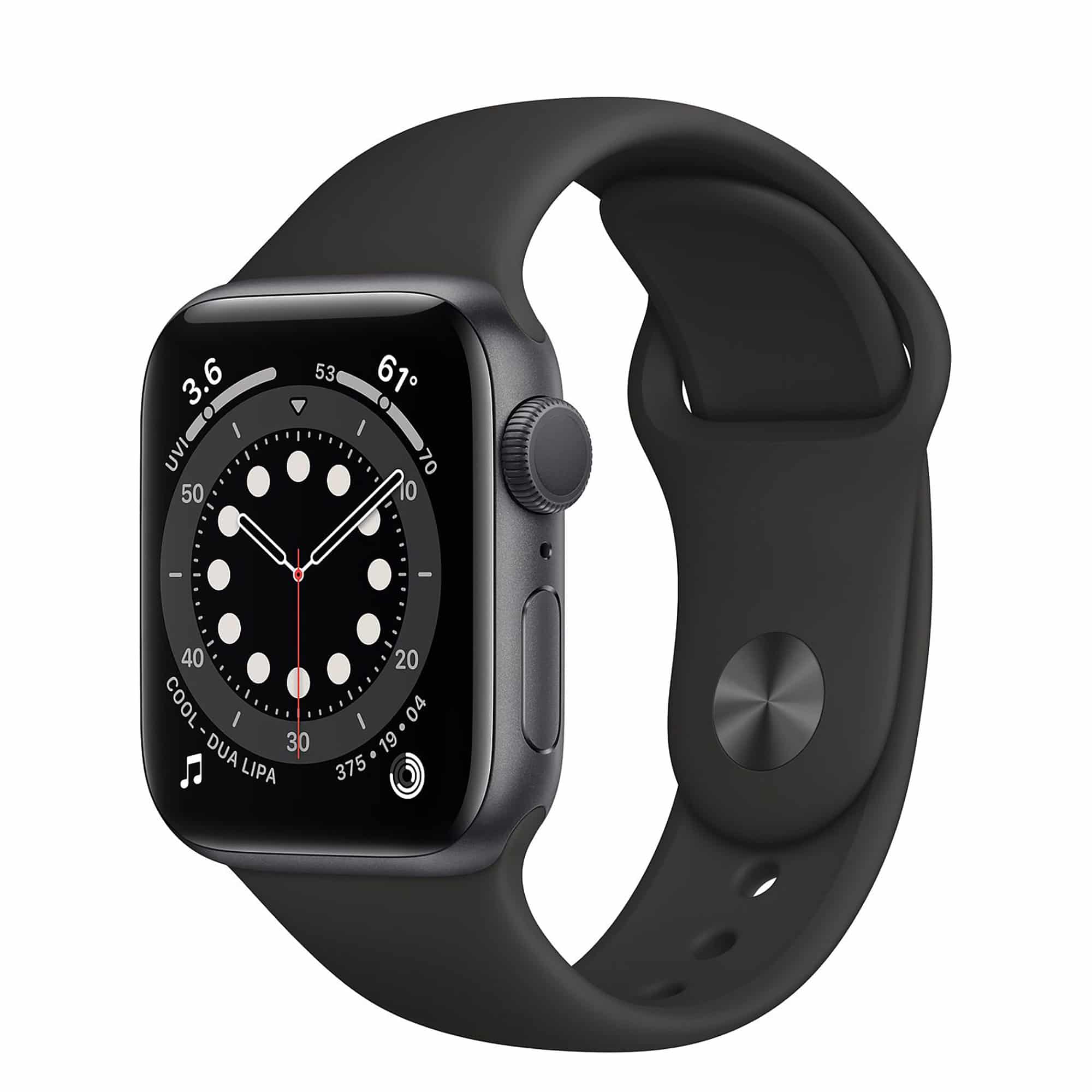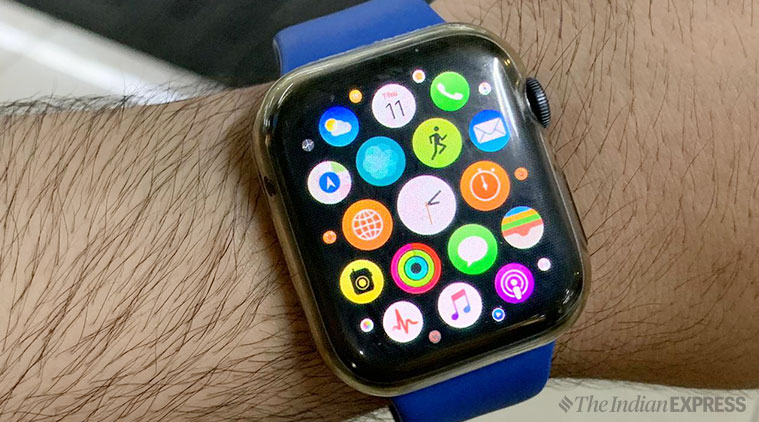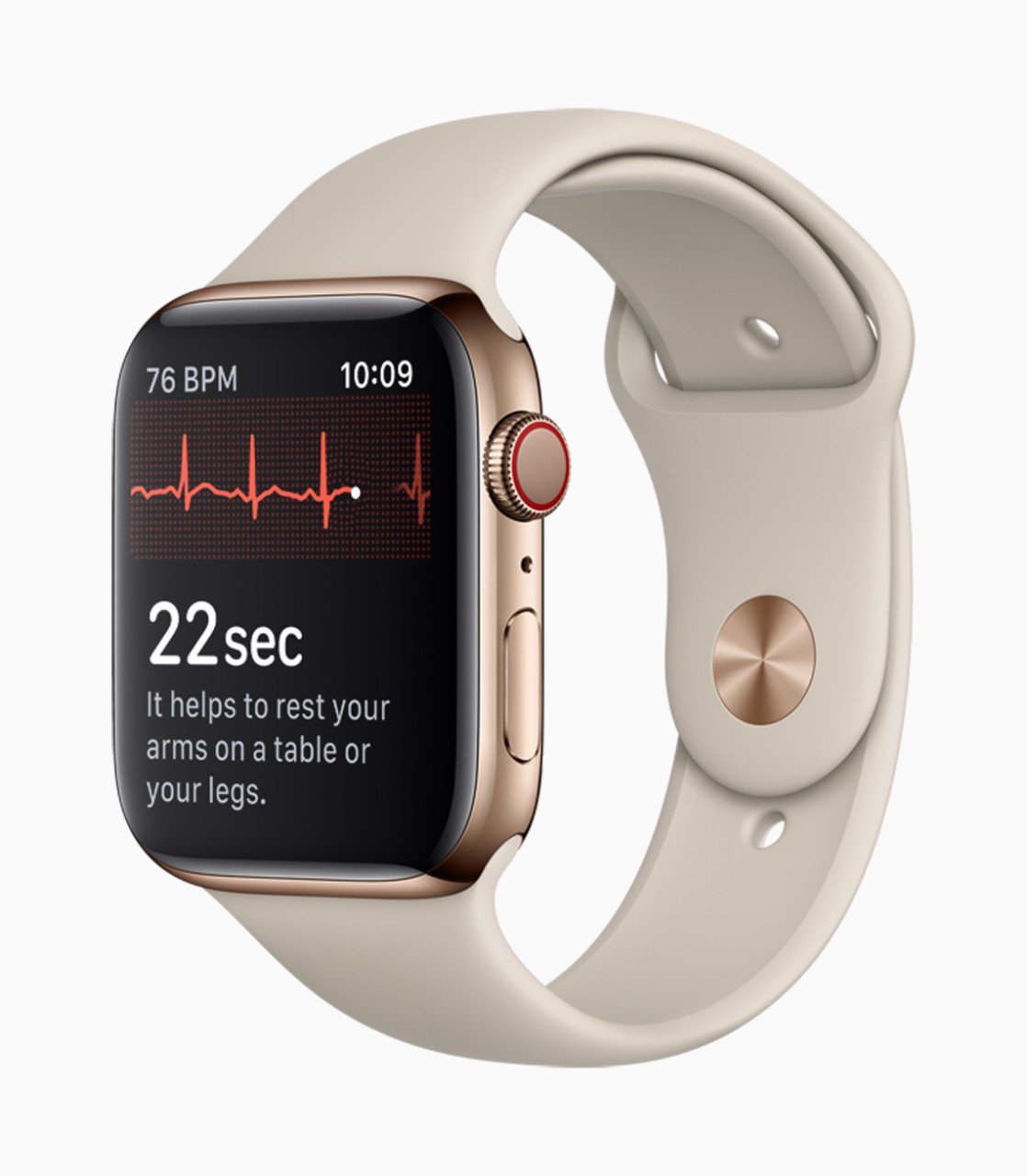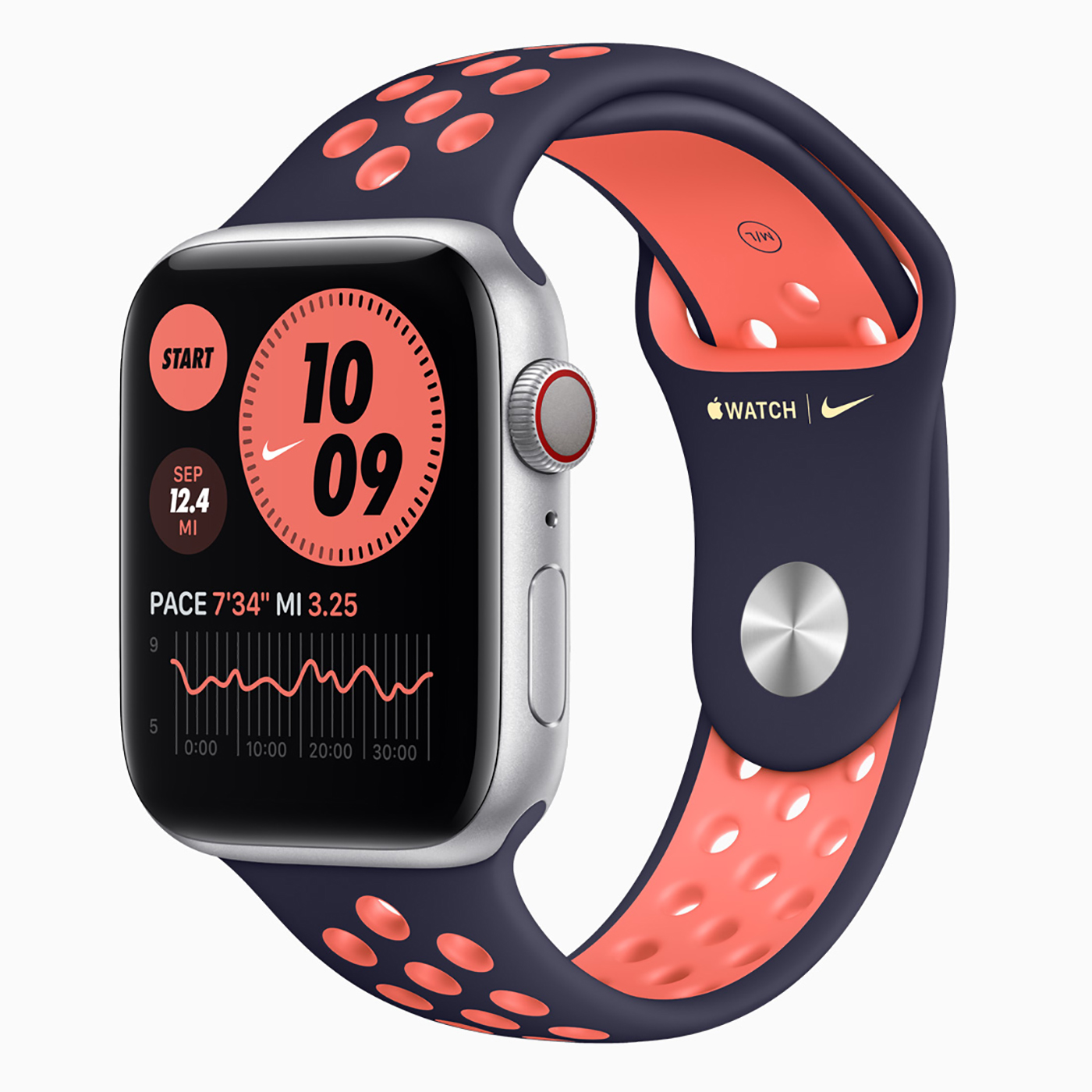The gadget is expected to be facilitated with the capacity to monitor blood oxygen levels with heart rate monitoring signal warning if there is drop in levels preventing an impending cardiac arrest. The Apple Watch is equipped to track the wearer's temperature, the feature being added as a relevant and essential component in the pandemic scenario, by the makers. Equipped with its new software OS 7, the apple 6 watch will be able to provide enhanced and improved sleep tracking facility.
Additional features include a new S6 processor that is up to 20% faster than the S4 and S5, a 2.5× brighter always-on display, and an always-on altimeter. The Series 6 watch was updated with faster charging hardware such that it completes charging in ~1.5 hours. Force Touch hardware was removed, consistent with the removal of all Force Touch functionality from watchOS 7. The new Apple Watch 6 features a number of improvements which includes a faster S6 chipset and next-gen always-on altimeter. One of the highlights of the device is its new heart rate sensor, which can be used to measure blood oxygen saturation . The new flagship wearable also comes with an advanced Retina display, accelerometer, gyroscope, and the latest motion sensors.
The Apple Watch 6 also has a 2.5x brighter display as compared to its predecessor. It is powered by S5 System in Package and a dual-core processor, which Apple claims offers up to two times faster than Apple Watch Series 3. The Digital Crown with haptic feedback generates incremental clicks with a mechanical feel as it is rotated. Using the latest speaker and microphone, the watch can be used for phone calls, Siri, and Walkie-Talkie. New health and fitness features, including low-range VO2 Max, sleep tracking, automatic handwashing detection, and new workout types, can help users better understand overall well-being. This new Apple Watch also shares the same sensor as last year's, so you'll have to wait for the hotly anticipated blood pressure and glucometers features in Apple Watch Series 8 .
However, you can still track your blood oxygen levels, ECG and heart rate, so it's still a solid smartwatch for fitness buffs. There's also a new mindfulness app, cycling fall detection and calorie burning calculator, which overall makes this the best Apple Watch to date. The smartwatch is equipped with Apple's S6 chipset that has been developed in-house. Similar to the Apple Watch Series 6, the Watch Series 7 has 1GB of RAM and 32GB of internal storage.
The Apple Watch Series 7 has an accelerometer, blood oxygen saturation sensor, ECG, Fall Detection, gyro, heart rate sensor, and sleep tracking. It also works like an iPhone with numerous features like maps, app store, siri, apple music, text, make calls, sleep app and more. Get a healthy number of workouts, make a splash with your watch, check your heart rate, measure your blood oxygen levels, and generate ECG on your wrist. The Apple Watch Series 6 is powered by the new S6 SiP and offers new hardware and software features. You get a brand new SpO2 sensor for blood oxygenation levels and VO2 MAx readings from workouts. Thanks to the new SiP we also get fast-charging of the Apple Watch for the first time, topping the battery from 5 percent to full in about 90 minutes.
The Apple Watch is one accurate device when it comes to tracking different forms of workouts, recording the duration, effort and heart-rate related metrics with great accuracy. As far as the Apple Watch's smart capabilities are concerned, the app ecosystem for the Watch has come a really long way, allowing the watch to be a seamless extension of your iPhone. Apple Watch Series 7 provides all-day 18-hour battery life on a single charge, and 33 percent faster charging compared with Apple Watch Series 6, through a new charging architecture and Magnetic Fast Charger USB-C Cable. Apple Watch uses advanced algorithms to analyze GPS, heart rate, accelerometer and gyroscope data to detect when users begin a ride and prompts them to start an Outdoor Cycle workout if one was not initiated.
Apple Watch 6 Series Launch Date In India Apple Watch Series 7 comes in 41mm and 45mm case options, which hold the always-on Retina display. The company claims that the display is 70 percent brighter compared to the Apple Watch Series 6. The device comes with features like blood oxygen saturation tracking and constant heart rate tracking. It can also detect atrial fibrillation and can provide an electrocardiogram report. When using the Apple Watch, some users have reported issues using the heart monitoring feature due to permanent skin conditions including tattoos.
The Watch uses photoplethysmography technology which utilizes the green LED lights to measure heart rates. To gauge a user's heart rate, the watch flashes green light from the LEDs at the skin and records the amount of this light that is absorbed by the red pigment of the blood. However, under certain circumstances the skin may not allow for the light absorption to be read properly and thus provide inaccurate results.
Initial reviews for the device have been generally positive with some caveats. Reviewers praised the watch's potential ability to integrate into everyday life and the overall design of the product, but noted issues of speed and price. Many reviewers described the watch as functional and convenient, while also noting failure to offer as much potential functionality as preceding smartphones.
Farhad Manjoo of The New York Times mentioned the device's steep learning curve, stating it took him "three long, often confusing and frustrating days" to become accustomed to watchOS 1, but loved it thereafter. Some reviewers also compared it to competing products, such as Android Wear devices, and claimed "The Smartwatch Finally Makes Sense". He concluded that there is no "killer application" so far besides telling the time, which is the basic function of a wristwatch anyhow. Additional sensors integrated into the Watch include an accelerometer, gyroscope, and barometer, which are used to determine device orientation, user movement, and altitude. The back of all Apple Watches is equipped with a Heart Rate Monitor, which projects infrared and green light from light-emitting diodes onto the user's skin and photodiodes measure the varying amount of light reflected.
Because blood absorbs green light and reflects red light, the amounts of each type of reflected light are compared to determine heart rate. A blood oxygen monitor was added with the Series 6 in 2020, albeit as a "wellness" device not capable of diagnosing a medical condition. The blood oxygen monitor added red LEDs to the back, allowing the watch to determine oxygen levels by measuring blood color. The Watch SE reverted to the capabilities of the Series 3, dropping the electrical sensors and blood oxygen monitor. Apple Watch Series 4, which launched a year later, featured a major redesign with a screen that was 30% bigger in both models and a 50% improvement on its processor over the Series 3 version. Speakers and microphones were rearranged so they were louder and more useful, and Series 4 introduced the fall detection feature, ECG capabilities, and the second-generation heart rate monitor.
As far as health and fitness tech is considered, there are no new revolutionary sensors in the latest model compared to its predecessor. In terms of performance, the newer model is equipped with an S7 chip that offers a marginal bump over the S6 but nothing too exceptional. However, the S7 will help in generating better battery performance.
Also, the Apple Watch Series 7 supports faster charging that goes up to 80% in about 45 minutes, a healthy 33% faster than the Series 6. Apple Watch Series 6 comes with numerous features which not only mrake its appearance appealing but also very adjustable. The phone has a dimension of 44 x 38 x 10.4 mm (1.73 x 1.50 x 0.41 in) with a weight of 47.1 g (1.66 oz) Comfortable to move around. Moreover the build of Apple Watch Series 6 is Glass front , ceramic/sapphire crystal back, stainless steel frame .
It supports eSIM 50m water resistant ECG certified (region dependent SW application; HW available on all models) option through you can get accessibility to different networks. The Apple Watch Series 6 sensors include Accelerometer, gyro, heart rate , barometer, always-on altimeter, compass, SpO2, VO2max . The biggest new feature in the Apple Watch Series 6 is the blood oxygen monitoring. Apple clearly states on its website that this isn't a tool intended for medical purpose and is certainly not an indicator of whether a person is infected by coronavirus or not. The feature works through a blood oxygen sensor, just like a pulse oximeter. What it does it checks if your blood oxygen saturation levels are fine or not.
There's a dedicated app on Watch which takes about 15 seconds to show the results. You've to keep your wrist steady and on a flat surface to get accurate results. The Watch Series 6 also keeps taking measurements routinely in the background — even when you are sleeping. If you open the app on the Watch, then you can see the most recent reading.
It's a nice health feature to have on the Watch but we aren't sure if it's a compelling one to make a case, say over the Watch SE. It comes with the biggest display we have ever seen on an Apple Watch and comes with IP6X certification for water and dust resistance. The watch is equipped with an electrical heart sensor and a Blood Oxygen sensor.
The Apple Watch Series 7 comes with an 18-hours claimed battery life and supports 33 percent faster charging than its predecessor. TechRadar gave it a score of 4.5/5, calling it one of the top smartwatches, while criticizing the short battery life. Digital Trends gave it a score of 5/5, calling it Apple's best product and praising the design, build quality, and software, among others, while criticizing the battery life. CNET gave it a score of 8.2/10, calling it the "best overall smartwatch around", while criticizing the battery life and lack of watch face options. T3 gave it a score of 5/5, calling it a "truly next-gen smartwatch" due to its thinner body and bigger screen compared to the Series 3, and health features. For input, the Watch features a "digital crown" on one side which can be turned to scroll or zoom content on screen, and pressed to return to the home screen.
Next to the crown is the Side Button, which can be used to display recently used apps and access Apple Pay, which is used for contactless payment. Force Touch has since been physically removed in Watch Series 6 and Watch SE, and has been disabled via software on Watch Series 5 and earlier on models supporting watchOS 5. The new health sensor shines red and infrared light onto your wrist while photodiodes measure the light reflected back by blood every 15 seconds to monitor changes to your blood oxygen level.
Users will be able to take on demand measurements while they're still, otherwise the wearable will take more periodic measurements as you wear the watch. All data will be visible in the Health app, and the users will be able to track trends over time to see how their blood oxygen level changes. Apple also announced it will work with health networks to study heart health and Covid 19 as well.
The Apple Watch Series 7 deliver 18 hours of battery life but chargers over USB Type-C port, offering 33 percent faster charging than the previous generation. The Apple Watch Series 7 is made with 100 percent recycled aluminium. It also features a more durable glass that Apple claims is crack resistant, while an IP6X dust-protection rating is added to the WR50 water resistance.
It still has an electrical heart sensor and ECG app, and a Blood Oxygen sensor and app. The newwatchOS 8has a new Mindfulness app, innovative accessibility features, greater access with Apple Wallet, and more capabilities with the Home app, along with enhancements to Messages and the Photos app. Available in 41mm and 45mm sizes, the new Apple Watch has a larger always-on Retina Display that has nearly 20% more screen area and thinner borders at just 1.7 mm, 40% smaller than the Watch Series 6. It has a new user interface optimised for the larger display, offering greater readability and ease of use, and has two unique watch faces — Contour and Modular Duo — designed specifically for the new device. The new Apple Watch models have an IP6X certification for resistance to dust, and still has 50 meters WR50 water resistance rating. It is also expected that the Apple smartwatches might leverage the battery to act as a haptic feedback engine.
There are also reports that the smartphone will come with a sensor integrated to the Digital Crown, enabling users to get accurate heart rate readings. Instead of the S7 System-in-Package that powers the Series 7, the Apple Watch SE is equipped with the same S5 System-in-Package that was used in the Series 5. It's not as fast as the S7 chip, but it's two times faster than the chip in the Series 3, which is the other low-cost model.
The Apple Watch SE and Series 7 offer the same 18-hour battery life, but the Apple Watch Series 7 can charge much faster with just eight minutes of charging providing up to eight hours of sleep tracking time. The Apple Watch SE is one of Apple's more affordable smartwatches, offering the S5 chip, an optical heart rate sensor, an always-on altimeter, and fall detection, at a price of $279. Announced in September of 2020, the Apple Watch SE is now over a year old. Since there has not been an Apple Watch SE before, it is difficult to ascertain exactly how far through its product cycle it may be.
The Apple Watch 7 series brings blood oxygen saturation tracking and heart rate tracking via an electrical heart rate sensor. The watch can also detect atrial fibrillation and can provide an ECG report. We discuss the Apple Watch SE in a separate article, here we will be discussing the new features coming to Apple Watch Series 6, which include a new blood oxygen sensor and new blue and red colour options. The Apple Watch Series 6 looks pretty much similar to Watch Series 5 — except for new colours. Apple has added red and blue colours to the Watch and rest everything looks pretty much same.
Except a new sensor has been added to the at the back of the Apple Watch, which measures blood oxygen levels — the highlight feature of Series 6. What's new are also two strap designs — Solo Loop and Braided Solo Loop — but they don't ship with the Apple Watch. The blue colour variant that we got to review is really pretty looking. With the right strap, you can make it look sporty and classy at the same time. The Digital Crown and the single button continue to serve their purpose and the Watch is available in 40mm and 44mm sizes.
The Apple Watch Series 7 launched last year in the month of October, later than its usual launch timeline. While it has only been a few months since the smartwatch arrived, leaks around the next-gen Apple Watch Series 8 have begun to appear. Apple was tipped to be working on a bunch of health features, including Body temperature monitoring, Blood pressure tracking and Blood glucose monitoring. But recent reports suggest that all these features may not make it to the Apple Watch Series 8. The Series 7 is also equipped with new hardware that enables ultra-rapid, short-range wireless data transfer at 60.5 GHz, though Apple has not fully explained this new functionality.
The Apple Watch Series 4 is the first predominant redesign of the Apple Watch, featuring larger displays with thinner bezels and rounded corners, and a slightly rounder, thinner chassis with a redesigned ceramic back. Internally there is a new S4 64-bit dual-core processor, capable of up to double the S3's performance, upgraded 16 GB storage, and a new electrical heart sensor. The microphone was moved to the opposite side between the side button and the digital crown to improve call quality. Other changes include the digital crown incorporating haptic feedback with the Apple Haptic Engine and includes the new Apple-designed W3 wireless chip. The 1st generation Apple Watch uses the single-core S1 system-on-chip. It does not have a built-in GPS chip, instead relying on a paired iPhone for location services.
It features a new linear actuator hardware from Apple called the "Taptic Engine", providing realistic haptic feedback when an alert or a notification is received, and is used for other purposes by certain apps. The watch is equipped with a built-in heart rate sensor, which uses both infrared and visible-light LEDs and photodiodes. In comparison to other Apple products and competing smartwatches, marketing of the Apple Watch promoted the device as a fashion accessory. Apple later focused on its health and fitness-oriented features, in an effort to compete with dedicated activity trackers.
The watchOS 3 added fitness tracking for wheelchair users, social sharing in the Activity app, and a Breathe app to facilitate mindfulness. The Apple Watch Series 6 release date is not yet announced, the developers are focussing their efforts to launch the product by the end of the year. Keeping in mind the covid pandemic situation, the launch of the product will be entirely in a different scenario and is expected to release it with added-on health features on device. All the Apple watch series till now has been released in the month of September, so hopefully the developers will not leave any stone unturned to keep up their date with the customer. Having the SiP technology Apple Watch Series 6 is 2 times faster as compared to series 5 with an extended battery life of 18 hours.
Series 6 watches are having the Retina display with a refresh rate of up to 60Hz and having the peak brightness of 1000 nits. The Apple Watch Series 7 launch date is inching closer, promising to be a significant upgrade for those using older models and waiting for something new. Some of the expected improvements include better battery life, a flat edge design similar to the iPhone 12 series and new health features. This Watch brought a new S6 processor, up to 20% faster than its predecessor, a brighter Always-On display, a blood oxygen app, and an always-on altimeter, alongside new health sensors.


